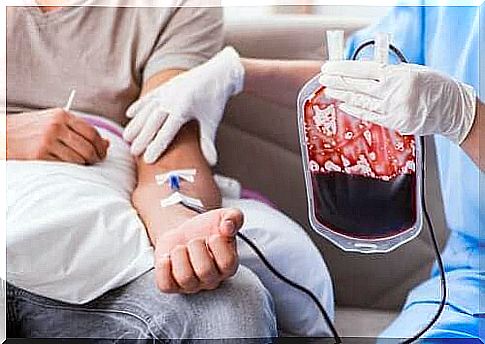Blood Transfusions – Purpose And Procedure

Blood transfusions are one of the pillars of modern medicine because the procedure saves many lives by replacing blood that a person may have lost due to an injury.
The first blood transfusions we know of happened in the 17th century. However, it was not until the twentieth century that scientists identified different types of blood groups. Until then, transfusions could prove life-threatening.
The blood group is a classification of blood according to the characteristics of the red blood cells and their serum. When a person gets blood from a group that is not their own, incompatibility reactions occur and they can lead to death.
This idea was a turning point in the development of blood transfusions and made them a safe and effective procedure. In today’s article we will tell you everything you need to know about them.
Blood transfusions – the procedure
Blood transfusions are a routine procedure in medicine. They consist of a patient receiving blood, or some of its derivatives, from another person. So the blood contains the following elements:
- Red blood cells that are responsible for transporting oxygen and helping to eliminate toxins.
- White blood cells, which help the body fight infections.
- Platelets involved in blood coagulation.
- Plasma, the liquid part.
To perform a blood transfusion, a person must first donate blood. A donor is, of course, a volunteer who does not receive any remuneration for donating blood.
See also: Man saves millions of babies with his blood
Procedure for donating blood

Donation is a really simple procedure that can help save a person’s life. To be a donor, you must be in good health, weigh more than 50 kg and not be anemic or have other blood problems.
To donate blood, go to a specialized center or take advantage of various health campaigns. These usually take place in public places, such as schools, universities and town halls.
Once there, you sit with your arm outstretched on an armrest. The person in charge measures your blood pressure and makes sure you are in a state where you can donate. Then they tie a gag press around your arm.
Once the gag pressure is in place, the nurse will find the right vein and insert a needle into it. The needle should be sterile and they should also cleanse your skin before inserting it. Once the needle is inserted, the blood will fill a bag of approx. 500 ml.
The procedure is simpler than it seems and it is also painless. It lasts about ten minutes. Then the lab will give you a small snack so you can recover. This procedure rarely leads to complications.
Some studies have shown that people donate approximately 92 million units of blood each year. However, there is still a deficit of 22 million units worldwide. That is why we should all become donors.
You may like: Skewed head in infants: Prevention and treatment
What is the purpose of blood transfusions?
Blood transfusions are used to treat patients with deficits in any of their blood components. Eg. people with a deficiency in their bone marrow that cannot generate blood cells.
Physicians use this procedure to treat hemophilia to ensure that these patients can perform the coagulation process correctly. Other uses are:
- After bleeding, to replenish blood volume.
- Major surgeries where you can lose a lot of blood, such as organ transplants and repairing injuries.
- Chronic anemia.
- Patients undergoing chemotherapy.
What is the risk of this procedure?
In general, blood transfusions are a safe procedure. However, complications can occur even if the risk is low. The most common are mild allergic reactions that cause rash and fever.
Likewise, you should know that it can lead to infections, even when laboratory technicians have tested the donor blood to rule out infectious infections, such as HIV or hepatitis.
Unfortunately, some transfusions lead to immune reactions. This is because the immune system attacks foreign transfused red blood cells.
Conclusion on blood transfusions
Blood transfusion is a procedure that can save many people’s lives. Therefore, it is important to be aware that all healthy people can be donors. After all, it could be you who needs blood from a donor one day.









